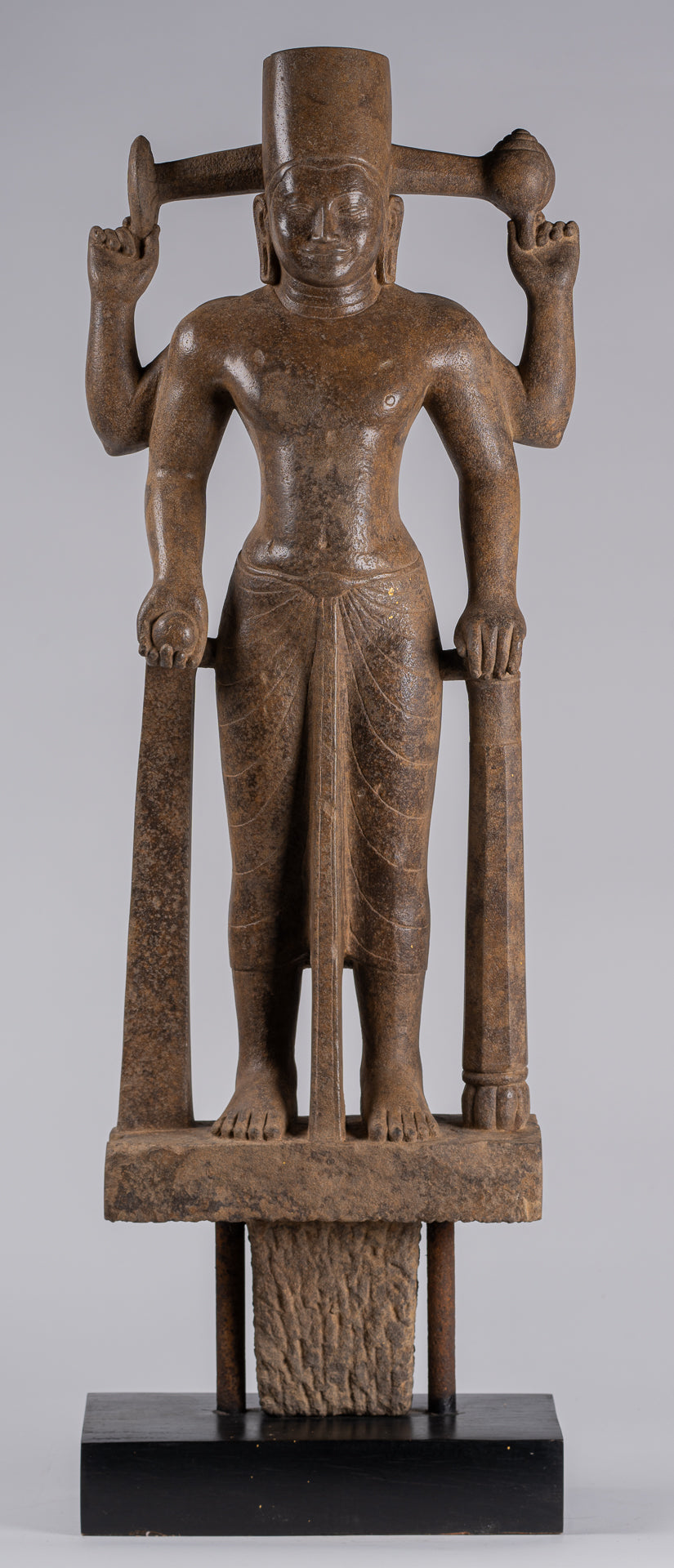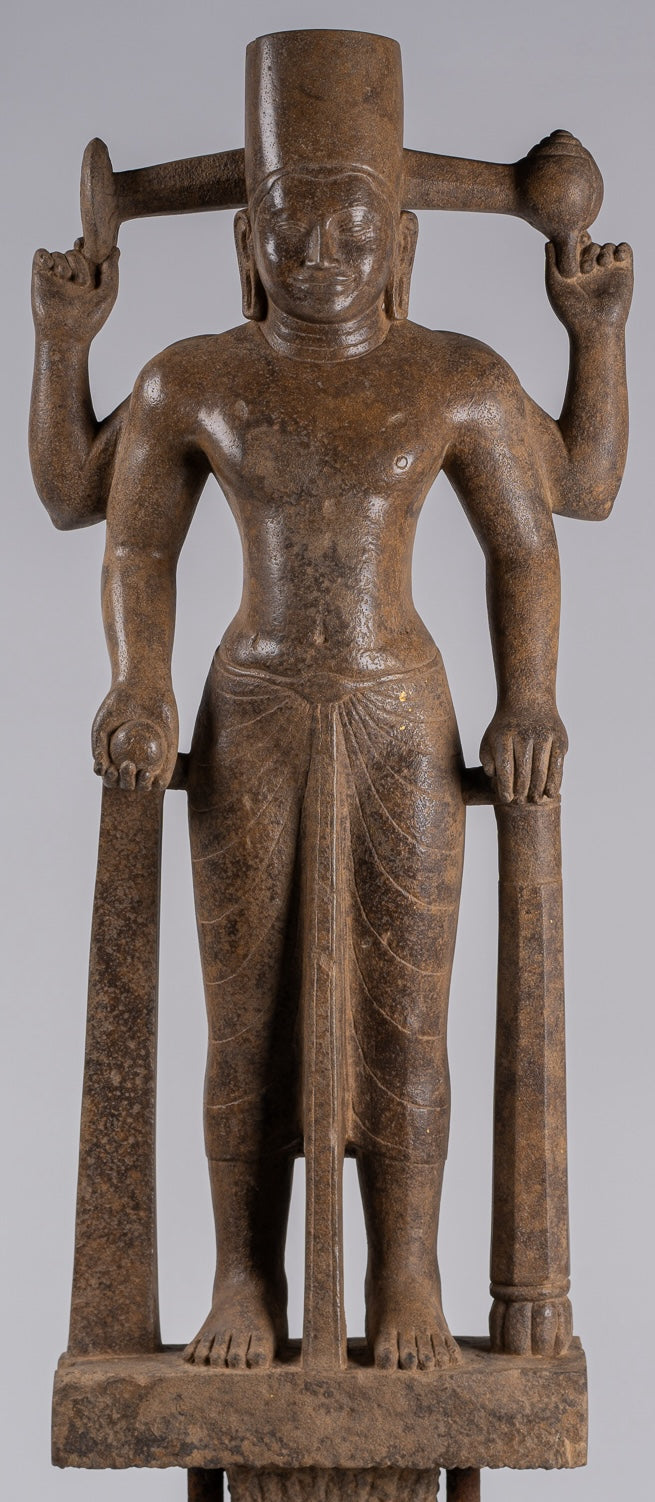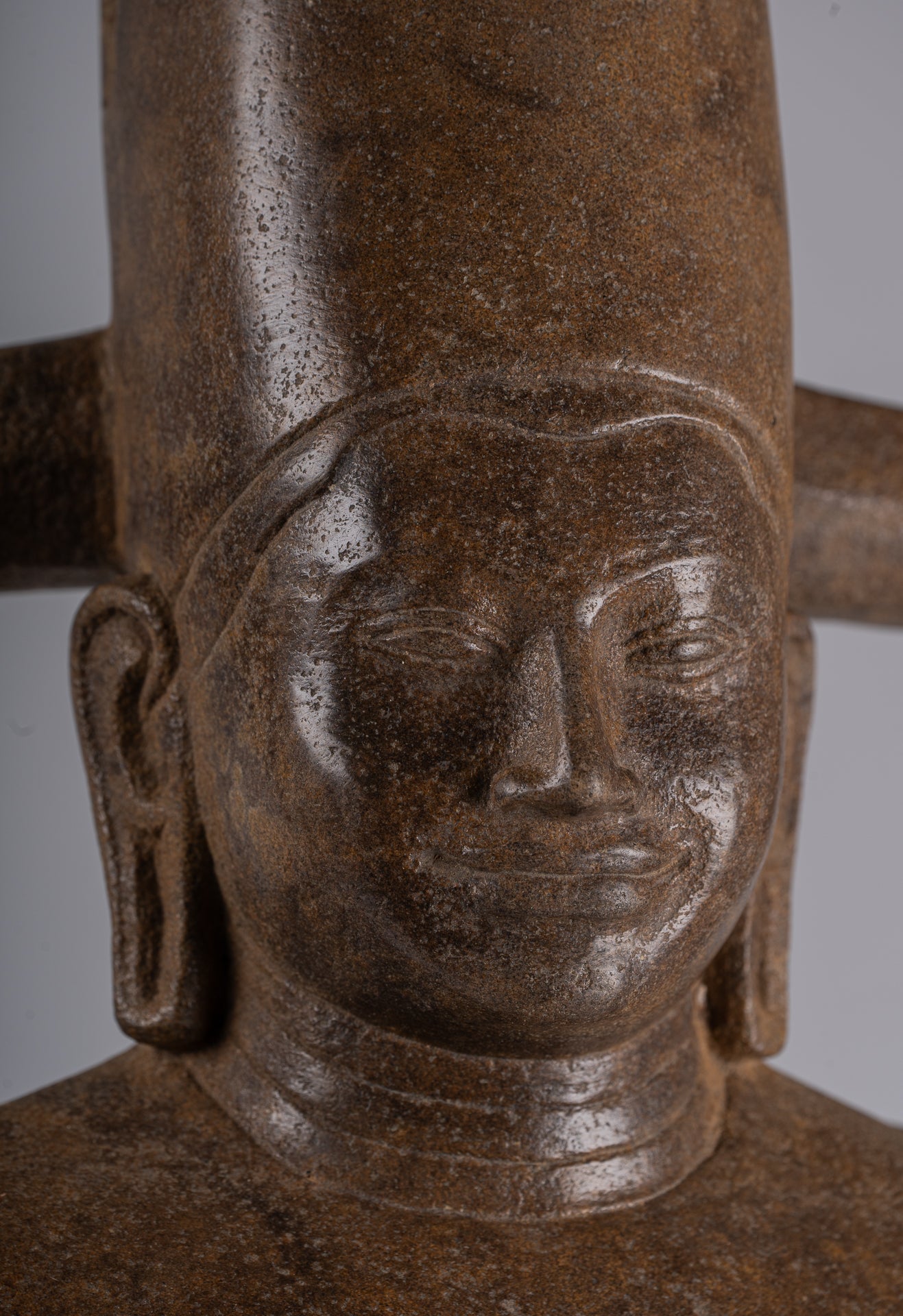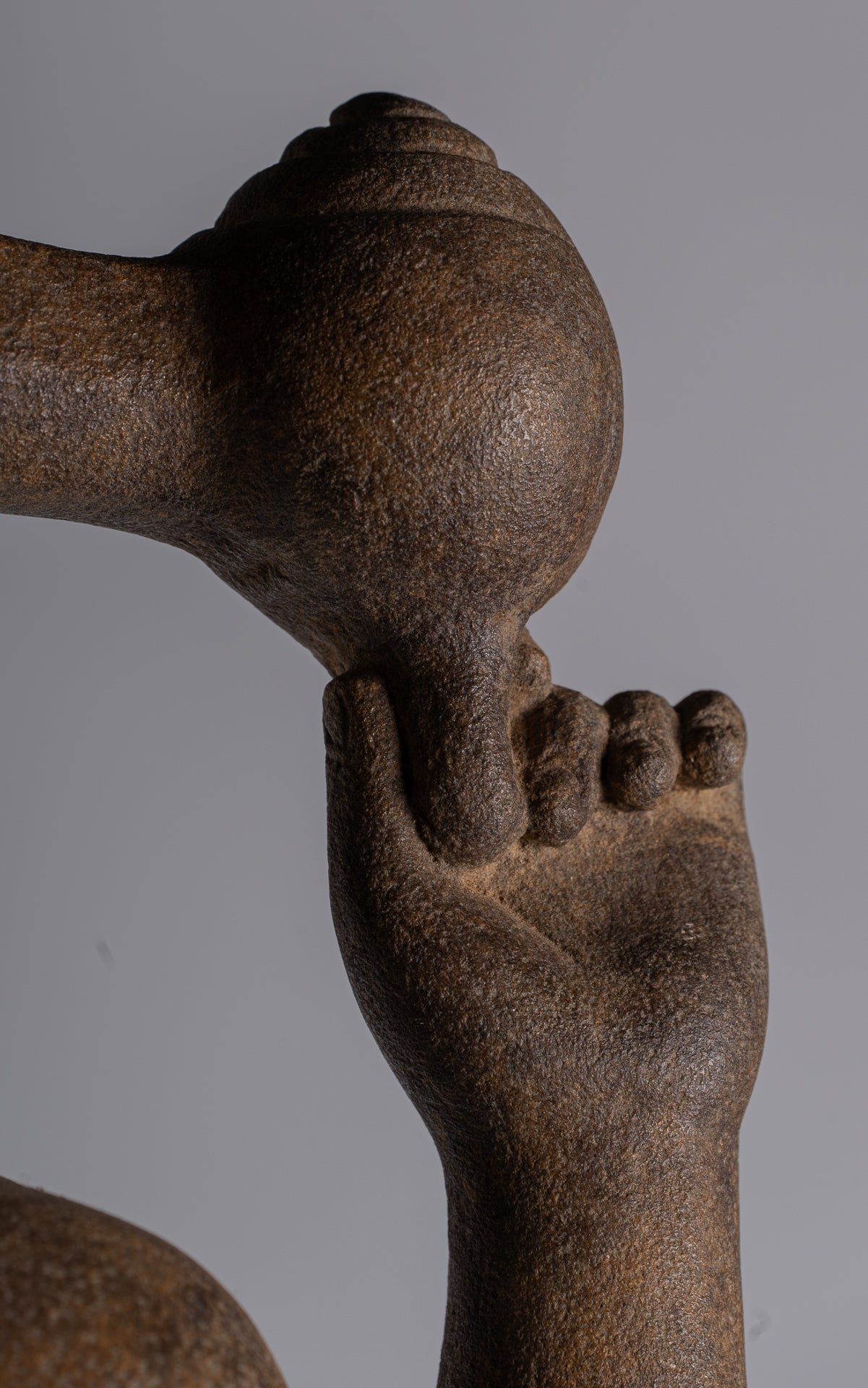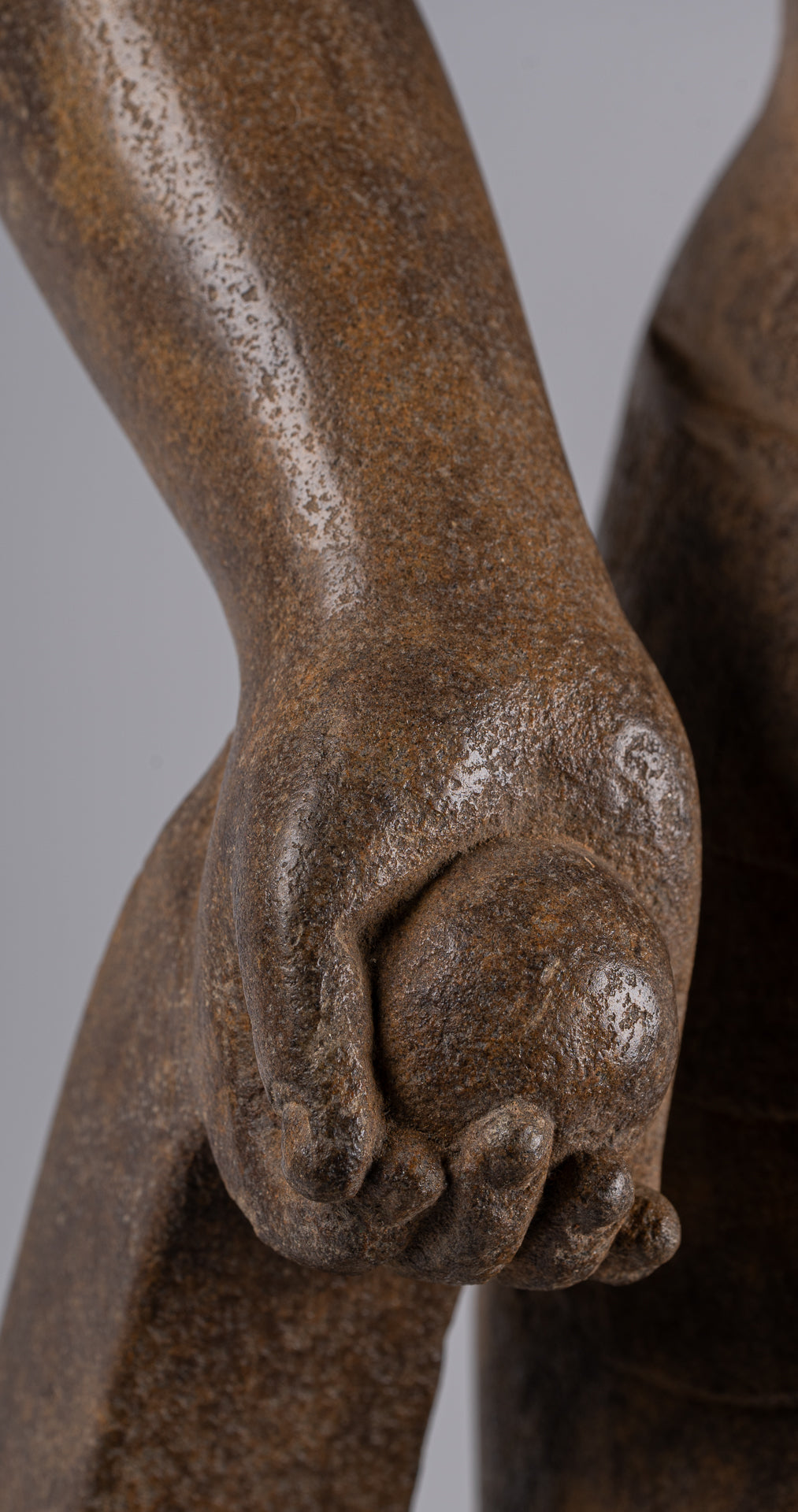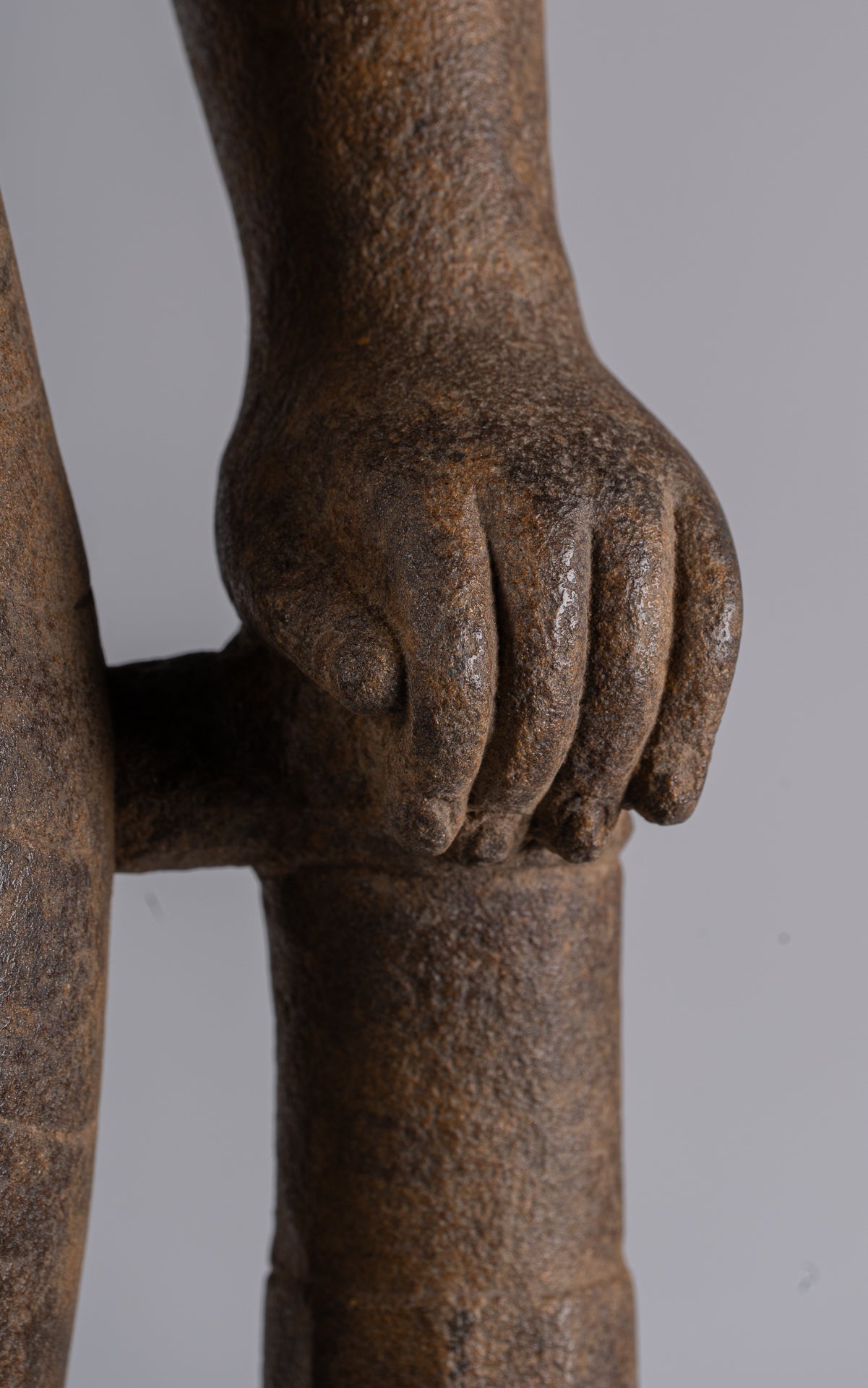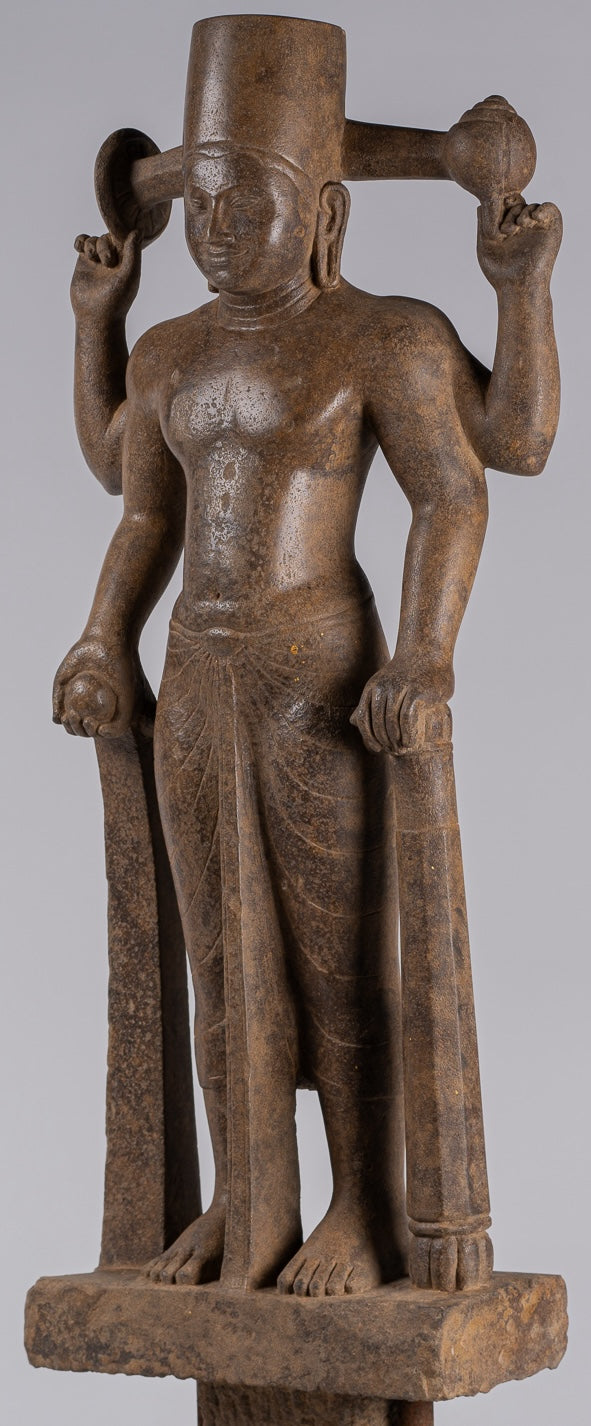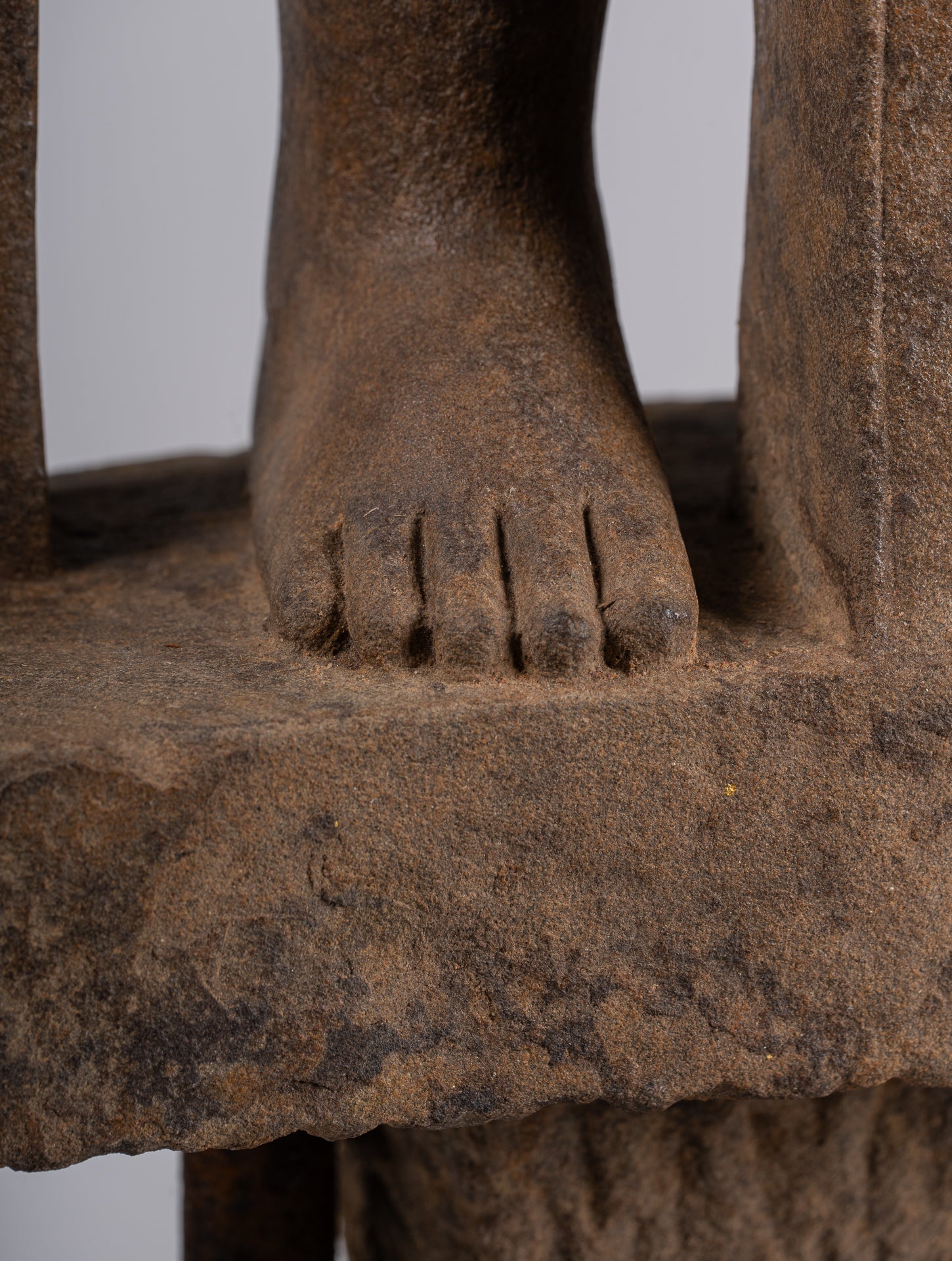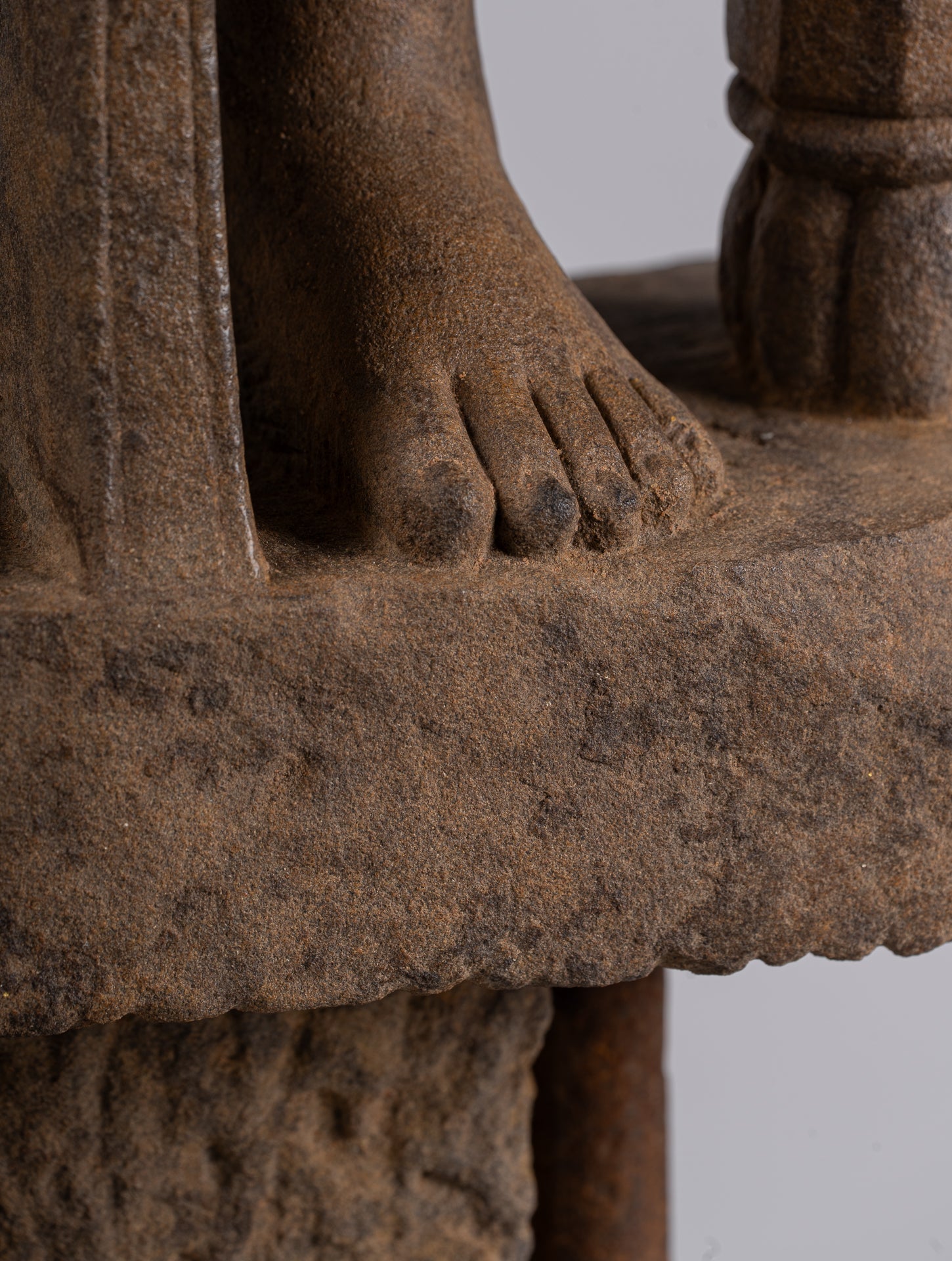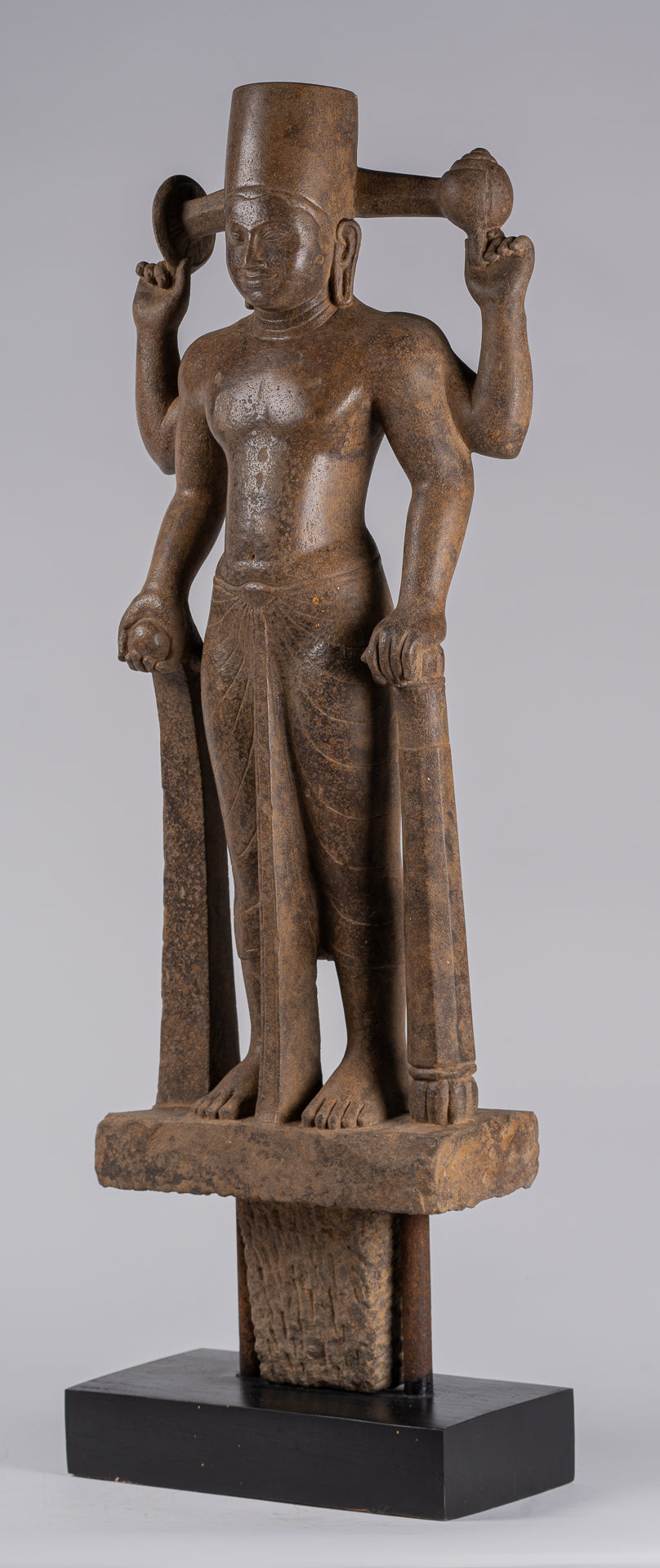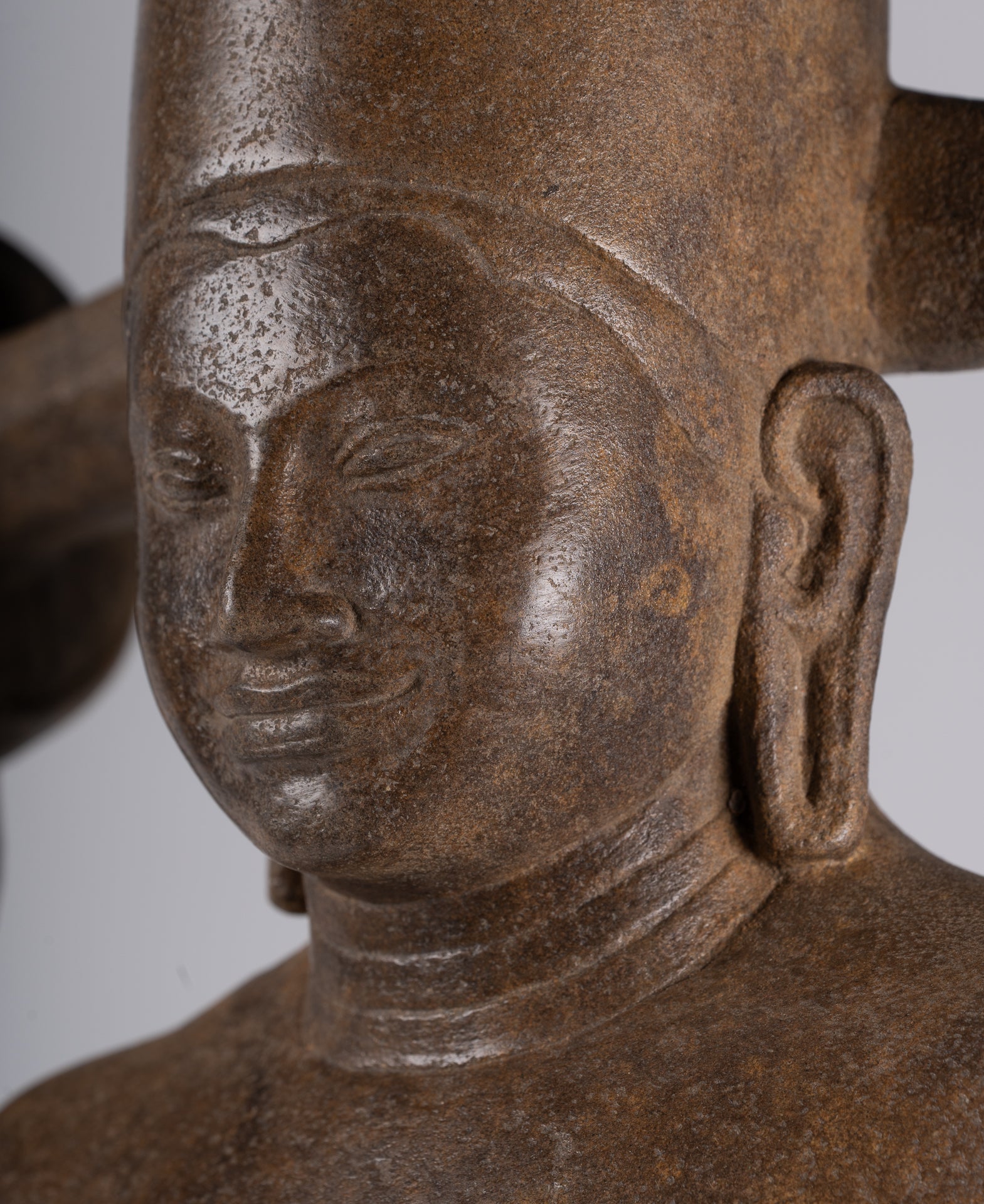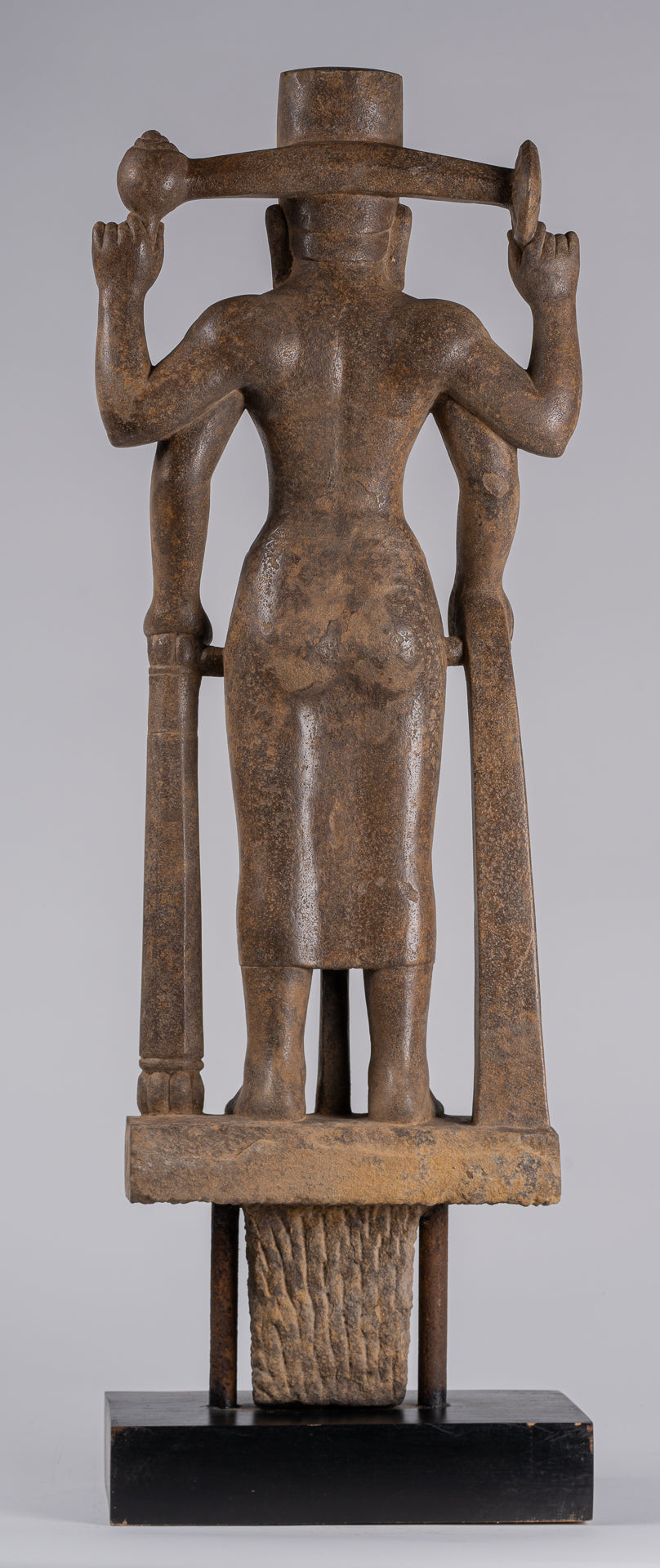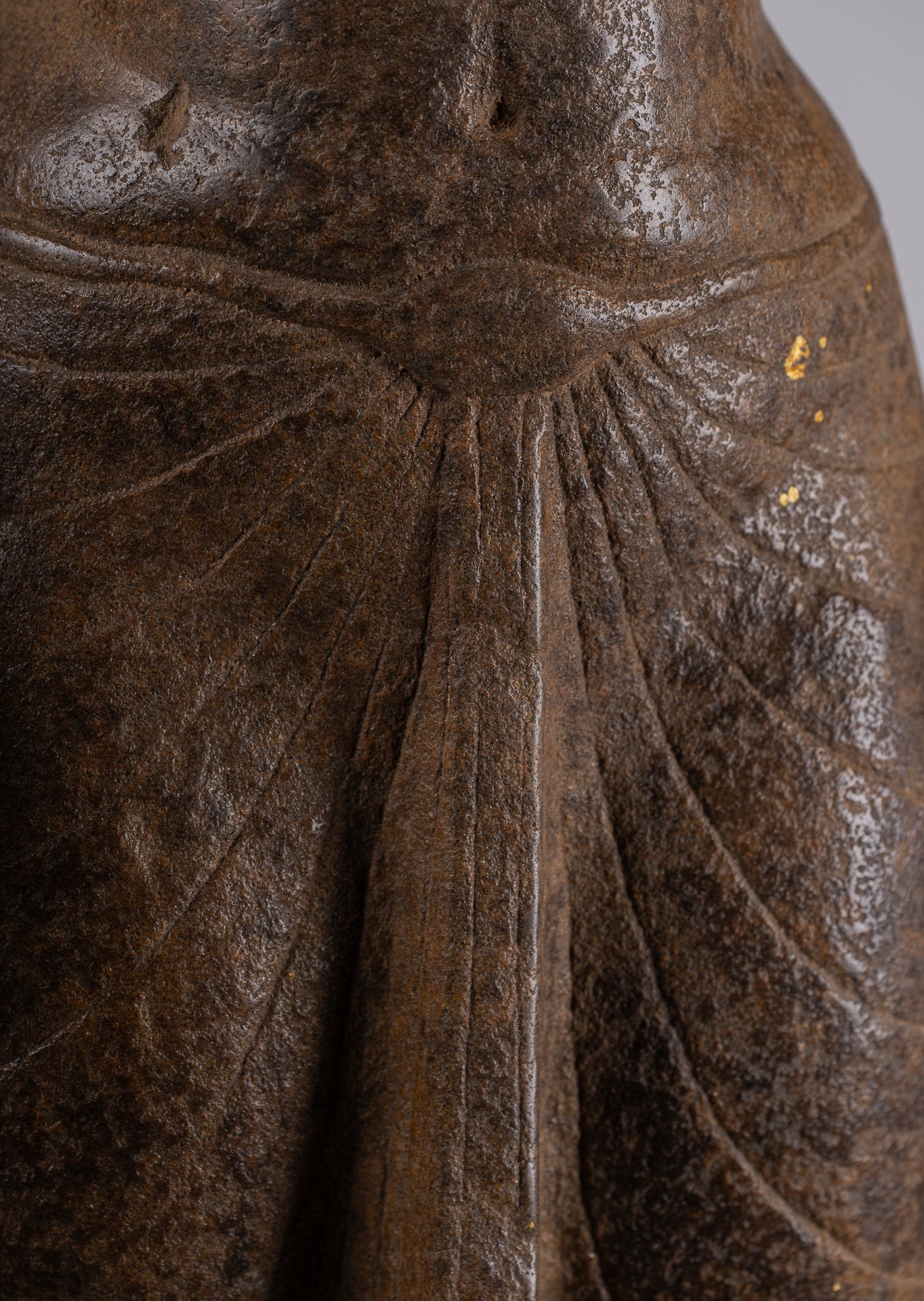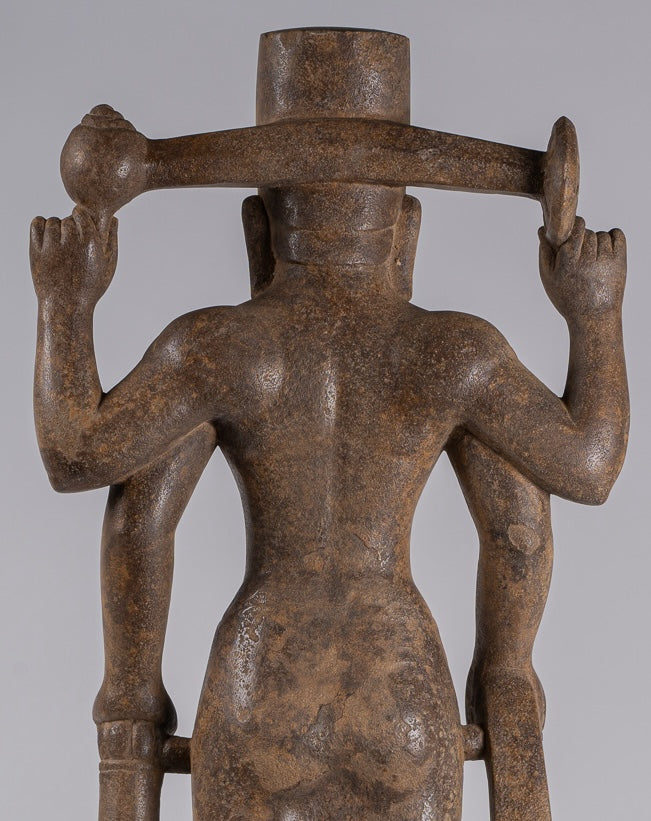-
Antique Pre-Angkor Style Mounted Sandstone Vishnu Statue - 91cm/36"
Measurements - Height 91cm/36"
A pre-Angkor, late seventh to early eighth century style, polished brown sandstone, Vishnu sculpture, the Indic deity of creation. The divine Hindu preserver and protector of human life, a role that provided natural analogies with earthly kingship for the Khmer.This muscular image of Vishnu is depicted standing samabhanga, straight-legged, on a rectangular base. The image is carved in the round with the back as carefully carved as the front. The image wears a high miter and a long clinging sampot knotted at the waist that reveals his powerful, muscular body above.
The Deities 'sampot can spin' and scarf are indicated by indented lines. The patterns created by the folded extremities of the scarf or scarves appear to anticipate the more complex patterns that were to become apparent later in this same period.
Vishnu is shown with four arms, one of his special attributes held in each hand. His lower left hand rests on the pommel of a mace, and his upper left hand holds a conch-shell trumpet by its longer end. Conch shells were extremely important in both Hindu and Buddhist rituals, and blowing a conch was believed to scare off evil spirits.
The upper raised right hand holds a chakra, a wheel-shaped thrown weapon with the properties of a boomerang that was associated with Vishnu as early as the Kushan period in India. The lower right hand holds a round object, which has been given several interpretations. It has been said to be a ball or a globe representing the earth, questionable since the earth was considered to be flat in the seventh century. Instead, it is likely that the attribute intended is a lotus that has become too abstracted to be recognizable.
Fourth-century Vishnu images in Gupta India hold a half-open lotus with incised petals that could easily be mistaken for a ball if the incised petal lines are omitted. In Vedic literature the lotus was associated with water and creation.
'The god Brahma, the Indian god of creation, was born in a lotus (growing from Vishnu's navel), and the lotus became an Indian metaphor for the created world.'
Early Khmer sculpture is carved in the round and often quite large, so artisans cleverly devised unobtrusive ways to support and stabilize the various appendages. Here the mace handle under the lower left hand and the vertical column supporting the lower right hand are designed to strengthen the sculpture. The long front panel of the ankle-length sampot gives added support to the ankles, and struts connect the upper arms to the head.Regional variations of this support system continued to be used throughout the seventh and into the early eighth century; by the end of the eighth century, the struts connecting the upper arms to the head and the center drapery panel had gone out of fashion.Lush lips, almond shaped eyes and an aquiline nose define his face. Distended earlobes may once have been adorned with real earrings.The Vishnu torso has a slender waist, broad hips and shoulders, not as muscular as earlier seventh century Khmer Vishnu images, but is far more graceful.
The present image lacks the rows of hair showing from beneath the miter in back on earlier Vishnu heads.
This is a particular temporal feature shared by late-seventh-century images in the National Museum in Phnom Penh that wear the earlier long sampot and also do not have hair projecting from under the miter, for example the Vishnu from Ba Sre, Angkor Borei, Takeo.The Vishnu torso is mounted on a wood base (later). The original stone locator for the sculpture is still visible.Scholarly Reference:
New York Metropolitan Museum Collection - Reference: 77664
Christie's Auction House - Sale 5080 (November 2003) - COLLECTION DE MR GEORGES HALPHEN
Radcliffe Collection, Published Dofflemyer, 1999
Provenance: Ex- private London Collection. All items are guaranteed to be as described. A Certificate of Authenticity will accompany all purchases upon request.
To aid with safe shipping your Vishnu will be wood crated before shipping. There is no additional cost for this packing, crating and shipping service.
SATISFACTION GUARANTEE - We have been offering SE Asian Art, through our website, for many years and are proud of the reputation we have developed for fair and honest listings. However, if for any reason, whatsoever, you are unhappy with your purchase please just let us know and we will provide a full refund. We want you to be 100% happy with your purchase.
-
The majority of orders will be shipped with DHL. This is a secure, express and fully tracked service.
Items less than 2Kg we typically ship using Royal Mail.
Once we receive your order we try to ship all orders the same or next working day.
Large and/or fragile pieces requiring palletising, specialist crating and/or extra packaging may take a little longer. Palletised shipments will be delivered curbside.
All orders over 35 GBP will be shipped free of charge.

-
We genuinely hope that all purchases delight.
However, if they do not, regardless of reason, we will refund all orders upon receipt of the unwanted item. Just notify us within 14 days of receiving your order that you wish to make a return and send the piece back to us with 30 days of delivery.
While much about Tai Hong Gong’s life remains shrouded in mystery, his teachings on meditation, simplicity, and the cultivation of wisdom and compassion are a lasting contribution to the spiritual traditions of China and the world.
As a representative of Chan Buddhism, Tai Hong Gong exemplified the transformative potential of meditation and the quest for enlightenment.


